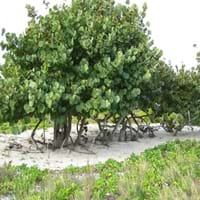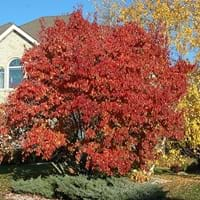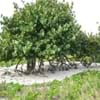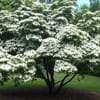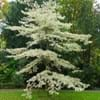Life Span
Perennial
Perennial
Origin
Southeastern United States, Caribbean, Central America, South America
Eastern Europe, Western Asia
Types
Not Available
Not available
Habitat
Rocky coastal hummocks, sand dunes
disturbed sites, Forest edges, gardens, Open Forest, Roadsides, Swamps, Urban areas
USDA Hardiness Zone
9-15
3-7
Sunset Zone
H2, 24
1a, 1b, 2a, 2b, 3a, 3b, 4, 5, 6, 7, 8, 9, 14
Habit
Oval or Rounded
Oval or Rounded
Flower Color
White
Light Green, Ivory
Flower Color Modifier
Bicolor
Bicolor
Fruit Color
Red, Purple, Yellow green
Red, Crimson
Leaf Color in Spring
Red, Olive, Bronze
Green
Leaf Color in Summer
Red, Olive
Green
Leaf Color in Fall
Red, Olive, Bronze
Yellow, Red, Orange, Gold, Crimson
Leaf Color in Winter
Red, Olive, Bronze
Not Available
Plant Season
Spring, Summer, Fall, Winter
Spring, Summer, Fall
Sunlight
Full Sun, Partial Sun
Full Sun, Partial Sun
Growth Rate
Medium
Medium
Type of Soil
Loam, Sand
Loam
The pH of Soil
Neutral, Alkaline
Acidic, Neutral, Alkaline
Soil Drainage
Well drained
Well drained
Bloom Time
Spring, Late Spring, Early Summer, Summer, Late Summer, Early Fall
Early Spring, Spring
Tolerances
Pollution, Drought, Salt, Soil Compaction
Drought, Pollution, Salt, Shade areas, Soil Compaction
Where to Plant?
Ground
Ground
How to Plant?
Seedlings
Layering, Leaf Cutting, Seedlings, Stem Cutting
Plant Maintenance
Medium
Low
Watering Requirements
Average Water Needs, Do Not over Water
Keep ground moist, Medium, Requires consistently moist soil
In Summer
Lots of watering
Lots of watering
In Spring
Moderate
Moderate
In Winter
Average Water
Keep Slightly Dry
Soil pH
Neutral, Alkaline
Acidic, Neutral, Alkaline
Soil Type
Loam, Sand
Loam
Soil Drainage Capacity
Well drained
Well drained
Sun Exposure
Full Sun, Partial Sun
Full Sun, Partial Sun
Pruning
Remove dead branches
Pruning in early stages, Remove damaged leaves, Remove dead branches, Remove dead leaves
Fertilizers
6-6-6 or 8-8-8
All-Purpose Liquid Fertilizer, Bonsai
Pests and Diseases
Fungal Diseases
Aphids, Borers, Honey fungus, Red blotch, Soft scales
Plant Tolerance
Drought
Drought, Pollution, Salt, Shade areas, Soil Compaction
Flowers
Insignificant
Showy
Flower Petal Number
Not Available
Not Available
Foliage Texture
Bold
Medium
Foliage Sheen
Glossy
Glossy
Attracts
Birds
Deers, Not Available, Rabbits, Squirrels
Allergy
Pollen
Not Available
Aesthetic Uses
Ground Cover
Beautification, Cottage Garden, Showy Purposes
Beauty Benefits
Good for skin, Makes Hair Silkier
Not Available
Environmental Uses
Protects from storm-induced erosion
Agroforestry, Wildlife, Windbreak
Medicinal Uses
Diaphoretic, Diuretic, Febrifuge, Tonic
Astringent
Part of Plant Used
Bark, Fruits, Leaves
Fruits, Leaves
Other Uses
Jam
As a tea substitute, Florist trade and landscaping, Food for animals, Showy Purposes
Used As Indoor Plant
No
No
Used As Outdoor Plant
Yes
Yes
Garden Design
Container, Edible, Feature Plant, Fruit / Fruit Tree, Hedges, Screening / Wind Break, Shade Trees, Street Trees, Topiary / Bonsai / Espalier, Tropical
Feature Plant, Foundation, Hedges, Mixed Border, Screening / Wind Break, Street Trees
Botanical Name
COCCOLOBA uvifera
Acer ginnala
Common Name
Sea Grape
Amur Maple
In Hindi
सागर अंगूर
अमुर मेपल
In German
Sea Grape
Amur-Ahorn
In French
Sea Grape
érable de l'Amour
In Spanish
Sea Grape
arce de Amur
In Greek
Sea σταφυλιών
Amur Maple
In Portuguese
Sea Grape
de bordo amur
In Polish
Sea Grape
klon amur
In Latin
Uva mare
amur acernis
Phylum
Magnoliophyta
Magnoliophyta
Class
Magnoliopsida
Magnoliopsida
Order
Caryophyllales
Sapindales
Family
Polygonaceae
Aceraceae
Clade
Angiosperms, Core eudicots, Eudicots
Angiosperms, Eudicots, Rosids
Tribe
Coccolobeae
Not Available
Subfamily
Eriogonoideae
Hippocastanoideae
Number of Species
Not Available
Season and Care of Sea Grape and Amur Maple
Season and care of Sea Grape and Amur Maple is important to know. While considering everything about Sea Grape and Amur Maple Care, growing season is an essential factor. Sea Grape season is Spring, Summer, Fall and Winter and Amur Maple season is Spring, Summer, Fall and Winter. The type of soil for Sea Grape is Loam, Sand and for Amur Maple is Loam while the PH of soil for Sea Grape is Neutral, Alkaline and for Amur Maple is Acidic, Neutral, Alkaline.
Sea Grape and Amur Maple Physical Information
Sea Grape and Amur Maple physical information is very important for comparison. Sea Grape height is 610.00 cm and width 610.00 cm whereas Amur Maple height is 460.00 cm and width 300.00 cm. The color specification of Sea Grape and Amur Maple are as follows:
Sea Grape flower color: White
Sea Grape leaf color: Red, Olive and Bronze
Amur Maple flower color: Light Green and Ivory
- Amur Maple leaf color: Green
Care of Sea Grape and Amur Maple
Care of Sea Grape and Amur Maple include pruning, fertilizers, watering etc. Sea Grape pruning is done Remove dead branches and Amur Maple pruning is done Pruning in early stages, Remove damaged leaves, Remove dead branches and Remove dead leaves. In summer Sea Grape needs Lots of watering and in winter, it needs Average Water. Whereas, in summer Amur Maple needs Lots of watering and in winter, it needs Keep Slightly Dry.
